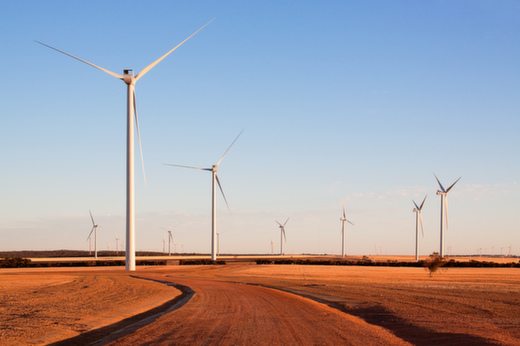After a stagnant market for the past two years thanks to the uncertainty brought about the Abbott government’s review of the renewable energy target, another major electricity retailer has formally entered the market to contract new projects.
Synergy, the West Australian government-owned retailer, has called for a tender for LGCs (large-scale renewable energy certificates) for projects that could be built (or even already exist), in its home state or elsewhere in Australia.
The move follows a tender by Ergon Energy, the Queensland-government owned retailer and network operator that operates in regional Queensland. Its call for 150MW of renewable energy capacity was swamped by more than 2,000MW of applications.
The focus of the Synergy tender, however, appears not to be capacity, but the certificates. And it is not fussed if it buys certificates from projects in other states, thereby supporting economic development elsewhere.
It is calling for around 500,000 LGCs a year to be delivered from 2018, This can be sourced as LGCs only from anywhere in Australia, or as LGC’s plus the supply of electricity within the WA’s main grid.
“The closing date for submission is 20 November and the evaluation of respondents will occur thereafter,” a spokesman said.
“Synergy is of the view that entering into this process is the responsible way to determine the best pathway forward in meeting its renewable energy commitments.”
The continued stagnation in the renewable energy market has caused the price of LGCs to surge, to around $70/MWh in recent weeks. This reflects the overall expectation of a shortfall, with analysts suggesting 3,000MW needs to be contracted by next year to avoid one.
Ordinarily this would be more than enough to cause new wind farms, or even solar farms, to be built. But financiers are generally reluctant to take the “merchant” risk, and lend money without a long term contract.
The decision by Synergy to tender for supply of LGCs for projects elsewhere in the country might be considered controversial, but is likely to get support from the WA government, which is facing an over-supplied market in its own grid.
Just two years ago, energy minister Mike Nahan lamented the absurd “capacity” market mechanism in WA, which resulted in “a large number of small peaking facilities receive capacity credits with the expectation they will never be required to operate.”
Yet the biggest casualty of this largesse appears to be not the useless, and unused fossil fuel generators, but the renewable energy industry.
Despite its excellent solar and wind resources (such as the Collgar wind farm, pictured above), not to mention its wave and tidal opportunities, Nahan said that the government would not be encouraging new large scale renewable energy projects.
“Western Australia is clearly in a situation of having excess generating capacity,” he said a speech.
“To build additional capacity on top simply to satisfy the RET (the national renewable energy target) is a sub-optimal approach and expensive for taxpayers. Western Australia can satisfy its RET requirement by purchasing certificates from projects on the Eastern States.”
And now that is what the government-owned Synergy apparently plans to do, although there is a massive pipeline of renewable energy projects in WA – both solar and wind – that will likely be competing for the tender.











